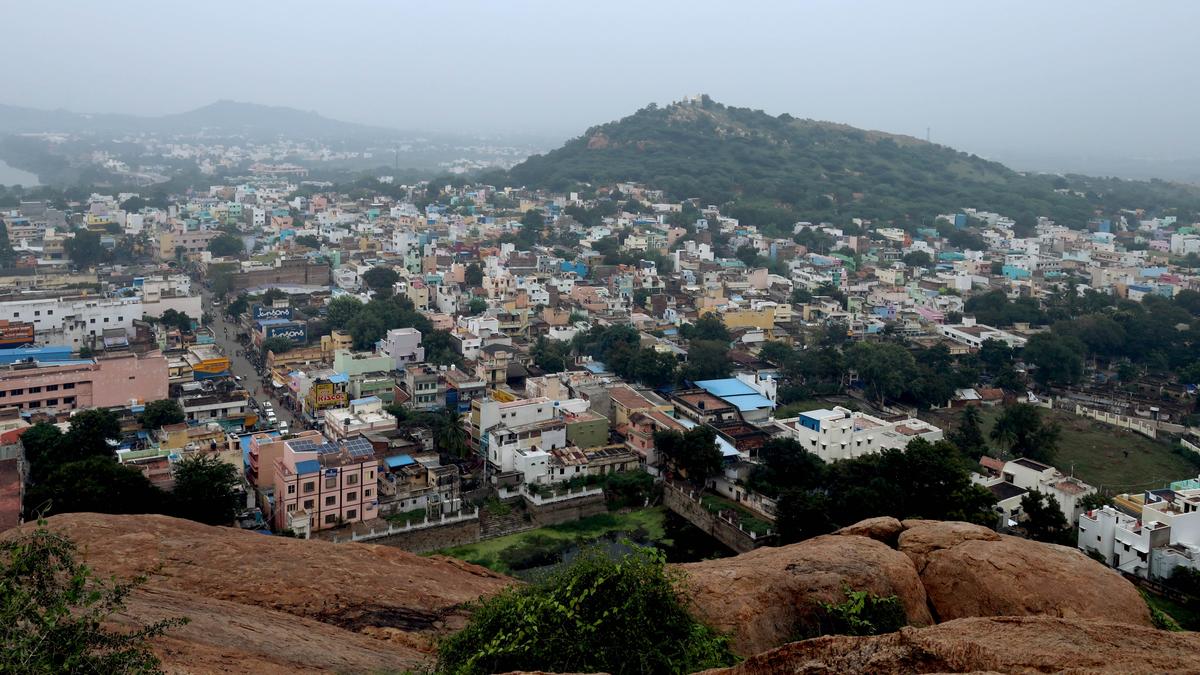
A dispute involving the temple and mosque at Tirupparankundram during 1915-16
The Hindu
Around 110 years ago, a dispute had arisen between the administrators of Madura Meenakshi Devasthanam and the Sultan Sikkandar Avulia Dargah that briefly warranted the intervention of the government.
Around 110 years ago, a dispute had arisen between the administrators of the Madura Meenakshi Devasthanam and the Sultan Sikkandar Avulia Dargah that briefly warranted the intervention of the government. The Devasthanam was then administering the Tirupparankundram Subramanya Swamy temple, the first of the six abodes of Lord Muruga.
However, back then, the issue was not politicised and there was no involvement of “outsiders”, as is the case in the ongoing communal tensions in Tirupparankundram. It was dealt with by the administrators of the respective places of worship.
It began in September 1915 when the Hukdars of the Dargah attempted to construct a mantapam at a ground in Nellitope for pilgrims to take rest, and even quarried stones from the hill for this. The Devasthanam manager protested. “The dispute centred on a path that diverges, with one side leading to the Durgah and the other to the Hindu shrines. The manager contended that the site had long been used by [Hindu] pilgrims for shelter and that the Durgah should not have exclusive rights over it,” wrote The Hindu’s ‘Own Correspondent’ under the heading ‘A Hindu-Mahomedan Dispute’ in his ‘Madura Notes’ column published on March 9, 1916.
Legal proceedings under Section 145 of the CrPc were initiated in the Court of the Deputy Magistrate, Melur Division. The Madurai Collector G.F. Paddison, a British ICS officer, on being consulted, offered to mediate if both parties agreed.
At that time, the Devasthanam manager insisted that the whole rock was the property of the Devastanam and, “in support of his claim, cited a kyfeet (document) dated 11-1-1837, which stated that the village of Tiruparankundram and its surrounding hamlets had been given to the temple for ‘Tirugspadithanam’ by Parakrama Pandyan,” the Correspondent said in a subsequent report on the issue published on April 11, 1916.
The Mahomedans contended that in the inam title deed granting lands for the maintenance of the Sikkandar Mosque, the hill was referred to as ‘Sikkandar Dargah’. They also claimed around 1807, the Collector had ordered that the trees on the hill should be enjoyed by the Hukdars. Regarding the issue of quarrying, they argued the Devasthanam and Dargah authorities had the right to quarry stones for the construction of sacred edifices on the hill.
The Collector, however, ruled the Hukdars were wrong in quarrying stones and attempting to construct the mantapam without approval. He added no burials should be allowed without a license from the Taluk Board.













